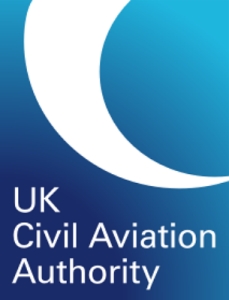Inspections of railways, powerlines, and roads as well as critical medical deliveries could be unlocked with new proposals put forward by the UK Civil Aviation Authority to allow further flying of drones beyond the visual line of sight.
Proposals set out in a consultation published on February 20th. by the regulator are a step forward for drone operations, which will help operators fly their drones safely beyond the line of sight of the Remote Pilot.
While some drones have been flying beyond visual line of sight (BVLOS) in the UK for several years, these flights are primarily trials under strict restrictions.
Instead, the proposed measures could enable beyond line of sight operations of drones by remaining at low heights and close to buildings or infrastructure. This means drones can fly where it is anticipated there would be fewer aircraft operating.
Kevin Woolsey, Head of Remotely Piloted Aircraft Systems at the UK Civil Aviation Authority, said:
“Our proposals are a positive step towards unlocking the next stage for drone flying in the UK.
Allowing drones to fly beyond the sight of the Remote Pilot, without placing restrictions on other aircraft in the area, will be a major achievement for UK drone operations.
Safety comes first in everything we do and so we have identified sensible mitigations on where drones can fly using this proposed concept to make sure we maintain levels of safety.”
This announcement aims to move UK drone operations one step further towards the next stage of beyond visual line of sight flying.
Once an atypical air environment policy is adopted, the UK Civil Aviation Authority plans to work with several operators to help implement it in a safe and scaled way.
It also represents the regulator’s commitment to safely enabling innovative technologies. It is also one of many initiatives from the UK Civil Aviation Authority designed to unlock our skies as part of the UK Future Flight Programme.
The UK Future Flight Programme is helping move the UK closer to a future where drones safely share more of our skies with other airspace users. The UK Civil Aviation Authority is working with industry to enable these developments for drones and other new forms of aerial transportation.
- The consultation will be open for six weeks from Tuesday 20 February and is available on the Civil Aviation Authority’s website.
- The proposals will allow drones to fly in what is called an atypical air environment. An atypical air environment can be considered as a volume of airspace where you can reasonably anticipate there to be a reduced number of conventionally piloted aircraft due to the proximity of ground infrastructure.
- The adoption and recognition of an atypical air environment for operators who may operate within one, and other air users who operate near or within what may be considered an atypical air environment, is an innovative concept for the UK Civil Aviation Authority.
- Operating within an atypical air environment does not address any aspect of ground risk that the operation may pose. It is likely that certain elements of ground risk are increased by operating close to infrastructure. It is for the operator to propose how they intend to mitigate other areas of risk, including seeking any relevant approval and ensuring coordination with the infrastructure owner, as required.
Source: Press Release

